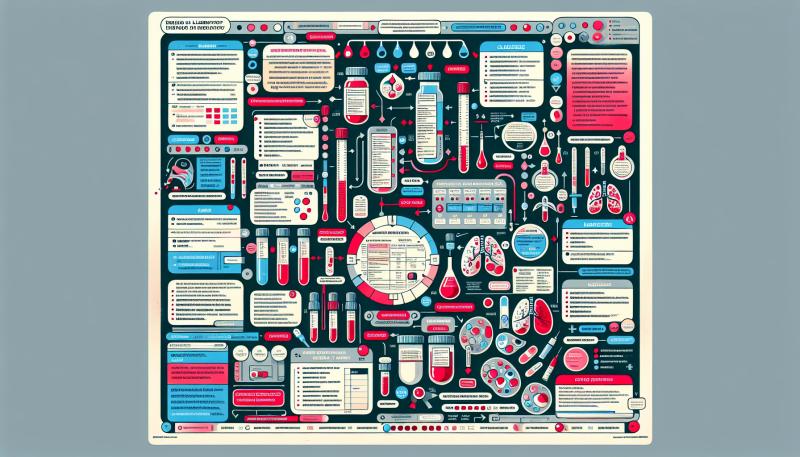
How to Read Your Lab Report: A Focus on Substances Tested
Understanding Your Lab Report: A Comprehensive Guide to Substances Tested
Navigating your lab report can be daunting, but understanding its various components is essential for taking the right steps regarding your health and safety. Lab reports serve as an important tool for both individuals and medical professionals, providing critical insights into bodily functions, potential conditions, and the presence of substances. By breaking down the elements of these reports, particularly focusing on the substances tested, you can better grasp your health status and any necessary actions to undertake.
What is a Lab Report?
A lab report is a detailed document that presents the results of laboratory analysis performed on samples, such as blood, urine, saliva, or tissues. These reports are commonly used in medical diagnostics, employment drug testing, and various screenings to monitor and assess overall wellness, detect infections, and evaluate exposure to substances.
The Components of a Lab Report
- Patient Information: This section includes your basic details, such as name, age, and patient ID number, which help in identifying your report accurately.
- Lab Information: The name and contact information for the laboratory that performed the testing are listed here.
- Sample Details: Information about the type and source of the sample collected for analysis.
- Test Name: A list of each test performed on your sample and its purpose.
- Results: Your test outcomes, typically presented with numerical values and units of measurement.
- Reference Ranges: Standard measurements used for comparison to determine normal or abnormal results.
- Comments: Sometimes, professionals add notes for clarification or further instructions based on the findings.
Types of Substances Tested in Lab Reports
Diving deeper into a lab report, a key section involves the types of substances tested. These substances can provide a plethora of information about your health and habits. Here's how you can interpret these tests:
1. Chemical Substances and Biomarkers
One of the primary reasons for lab testing is the measurement of chemical substances and biomarkers, which can indicate how well organs function, pinpoint nutritional or electrolyte imbalances, and assist in diagnosing conditions.
- Blood Glucose: Indicates blood sugar levels, valuable for diagnosing and managing diabetes.
- Cholesterol Levels: Includes LDL (bad cholesterol) and HDL (good cholesterol), critical for assessing heart disease risk.
- Hormones: Analyzing hormones such as thyroid hormones can provide insight into metabolic and reproductive health.
- Liver Enzymes: Elevated levels may indicate liver damage or disease.
2. Drug Testing
Drug testing is another significant area in lab reports, especially for employment screening or legal matters. Understanding these tests helps ensure compliance and awareness:
- Panel Tests: Commonly include tests for marijuana, cocaine, opiates, amphetamines, and alcohol.
- Confirmatory Tests: Used when preliminary tests return positive, providing more definitive results.
3. Infectious Diseases
Tests for infectious diseases are critical for diagnosing conditions, ensuring proper treatment and containment of infections:
- Viral Markers: Such as those for HIV or Hepatitis, these tests check for the presence of specific antibodies or antigens.
- Bacterial Cultures: Used to identify bacterial infections and determine susceptibility to antibiotics.
How to Interpret Results: Key Considerations
Interpreting the results from the numerous substances tested in a lab report requires a keen eye and a bit of knowledge. Here are some pointers for better understanding:
- Compare with Reference Ranges: Many results will include a reference range indicating normal or expected values for comparison.
- Units of Measurement: Lab results can vary based on units of measurement used. Be sure to consider the units when evaluating your results.
- Consult a Professional: Always consult a healthcare provider to help interpret results accurately and determine the best course of action.
- Initial vs. Confirmatory Testing: Differentiating between initial screening tests, which can be prone to false positives, and confirmatory tests, which provide more accurate determinations, is crucial.
Why Correct Interpretation Matters
Correct interpretation of your lab report is essential for effective healthcare management. Misinterpretation can lead to unnecessary anxiety or misguided treatments. By focusing on the substances tested and understanding their implications, you are better positioned to discuss outcomes with your healthcare provider and follow the necessary steps for any required treatment or lifestyle adjustments.
Conclusion
Reading a lab report might seem complex, but understanding the fundamentals, especially concerning the substances tested, empowers you with knowledge about your health. Familiarize yourself with the various components, consult with healthcare professionals, and use reports as part of a comprehensive health management strategy. By taking an active role in understanding your lab report, you are not only better informed but also more in control of your health journey.
When considering testing services, IMS Screening Solutions provides reliable and accurate lab services, ensuring your results are comprehensive and precise. Always choose a reputable service provider to guarantee the quality and trustworthiness of your lab results.
